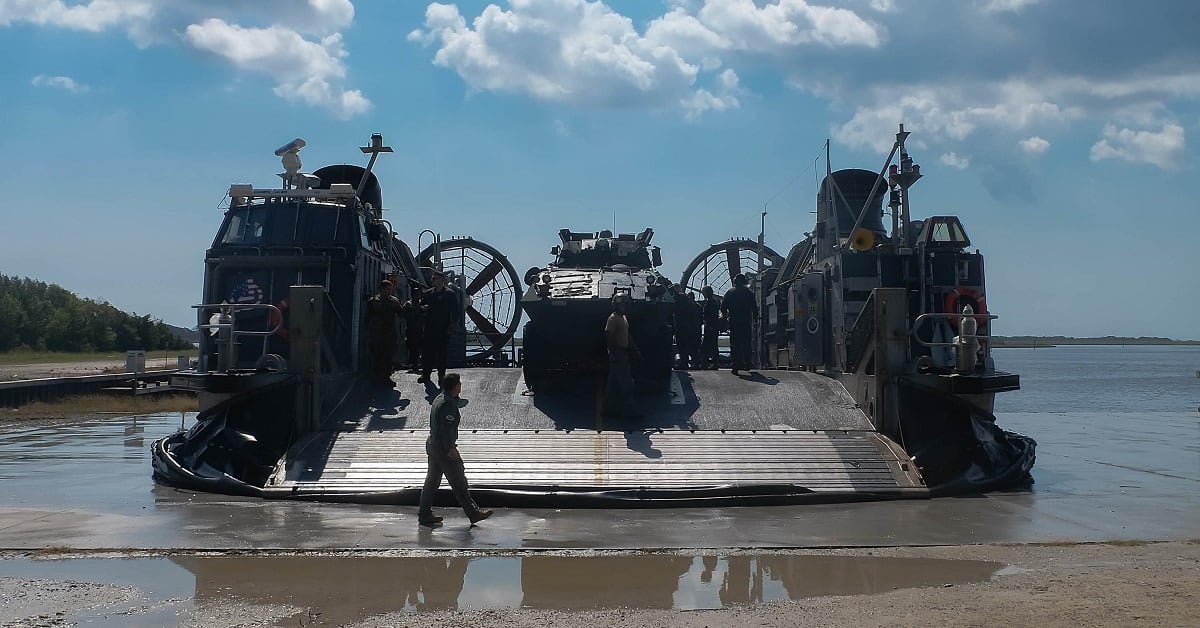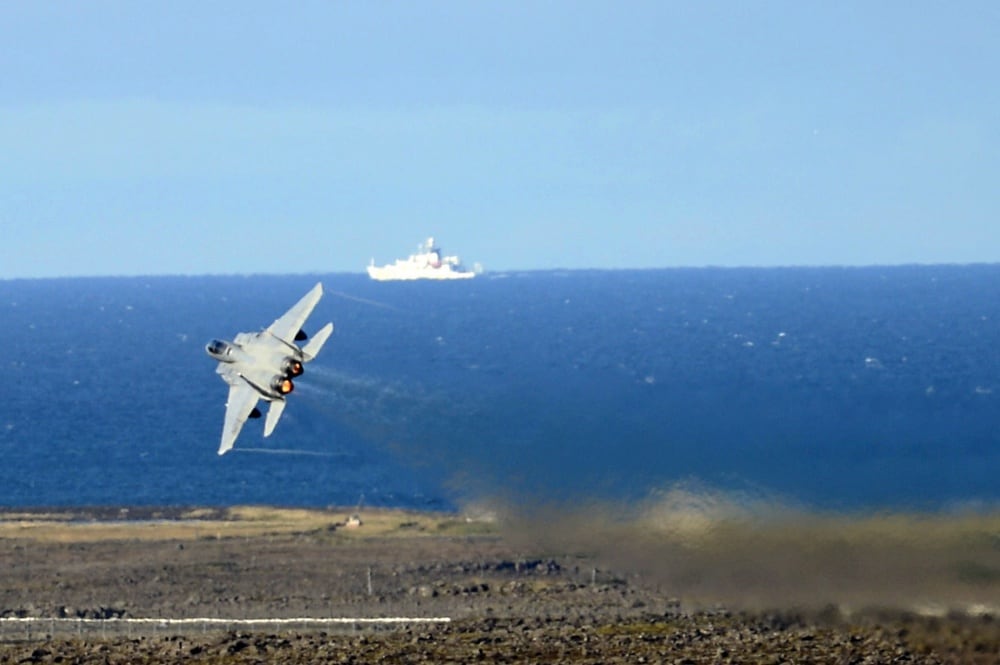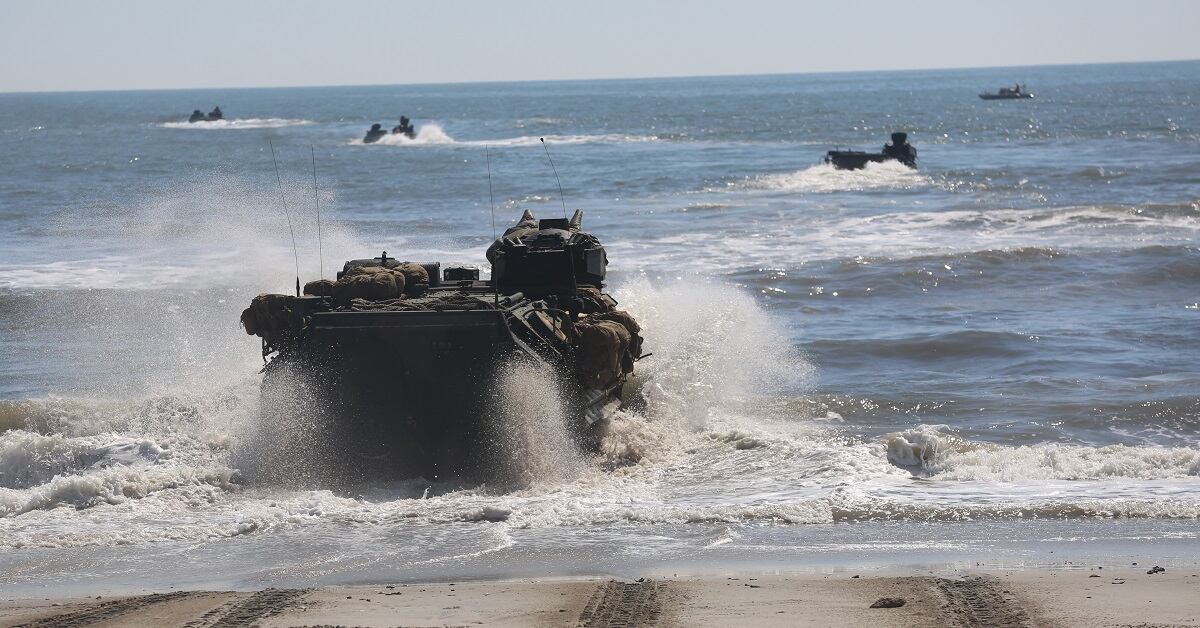In the popular 1986 Tom Clancy Cold War thriller “Red Storm Rising” Soviet forces carry out a daring assault on Iceland, landing Soviet troops and destroying the NATO U.S. sub-hunting airbase at Keflavík.
The island eventually is wrestled back by United States Marines who carry out an amphibious assault on the Nordic island nation.
But the description of Tom Clancy’s breakout of World War III is not a far-fetched scenario, and the Corps may even be rehearsing such a possibility.
With the lead up to NATO’s largest exercise in more than a decade, Trident Juncture, the Corps is planning a rehearsal amphibious landing on Iceland before it carries out the real thing in Norway for the NATO-led training evolution.
Nearly 2,000 Marines and sailors embarked with the 24th Marine Expeditionary on board the Wasp-class amphibious assault ship Iwo Jima are steaming their way toward NATO’s high north in preparation for the amphibious assault.
While the Iceland landing is a rehearsal for Trident Juncture, is it really a message to Russia that the Corps and NATO can and will defend Iceland against Russian aggression?

At a media roundtable event Oct. 10, the Commandant of the Marine Corps Gen. Robert B. Neller said he wouldn’t speculate on people’s perceptions of the planned landings and NATO exercise, but that Trident Juncture had been planned for many years.
The top Marines answer was in response to a question about the similarities between the Iceland rehearsal landing and Clancy’s novel.
In 2014, Soviet and Russian military expert Phillip Petersen published a report for the Defense Department titled “The Northwestern TVD in Soviet Operational-Strategic Planning.”
Petersen’s research lays out a detailed road-map for how Russian forces could launch an attack on the Scandinavian countries and Europe’s high north, and how NATO could thwart such aggression.
In his research, Petersen posits that Iceland is very much an attractive target for Russia and could even be captured just as it was described in Clancy’s novel.
“Faced with a predominantly sea-oriented NATO coalition dependent on control of the SLOCs [sea lines of communication], there can be no question but that the Soviets would have liked to capture or at least neutralize Iceland,” Petersen said in his report.
The capture of Iceland would be a major strategic victory for Russian forces by opening up the Greenland, Iceland and the United Kingdom, or GIUK gap — a gateway for Russian naval and submarine forces in the Atlantic Ocean.

In Clancy’s thriller, a covert assault by Soviet forces embarked on a merchant barge vessel land on Iceland. While aircraft and Soviet airborne units destroy a small Marine company and aircraft on the Island.
“The Soviets did, in fact, have barge-carrying ships that could have, as in the novel, taken advantage of the normally low profile of Icelandic defenses before NATO reinforcement,” Petersen said in his research.
A way to thwart this, according to Petersen, is simply an early reinforcement of Iceland by NATO forces.
Currently, the U.S. is amid plans to overhaul some of its former Cold War infrastructure at its airbase in Keflavik. Nearly $14 million is being spent on new hangars for sub-hunting Navy P-8 Poseidon aircraft.
Nearly 40,000 troops from dozens of countries are slated to participate in Trident Juncture in Norway.
Shawn Snow is the senior reporter for Marine Corps Times and a Marine Corps veteran.





